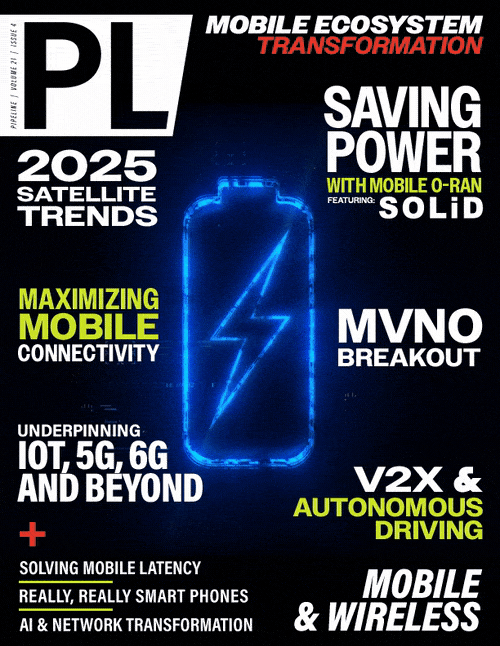How V2X Could Complement
Autonomous Driving
By: Holger Rosier
 Vehicle to Everything (V2X) communications gives car passengers, advanced driver assistance systems (ADAS), and autonomous driving (AD) systems access to third-party and OEM digital services and
applications. V2X devices act as an interface to the digital world, offering the ability to provide software and firmware updates over the air, provide real-time traffic information, deliver
on-demand infotainment and entertainment content, and enable many other applications.
Vehicle to Everything (V2X) communications gives car passengers, advanced driver assistance systems (ADAS), and autonomous driving (AD) systems access to third-party and OEM digital services and
applications. V2X devices act as an interface to the digital world, offering the ability to provide software and firmware updates over the air, provide real-time traffic information, deliver
on-demand infotainment and entertainment content, and enable many other applications.
In principle, a vehicle can use its sensors to drive automated without a radio link to external systems. However, vehicle-to-vehicle (V2V) communication and access to external data sources via dedicated infrastructure (V2I) such as Road Side Units (RSUs) or cellular networks (V2N) will improve comfort and safety even further. Several automated driving functions require accurate position information. For always having highly accurate position data, GNSS position correction data are transmitted over cellular networks to the ADAS/AD system, including the lane-level navigation in urban environments with complex road layouts. Data transmitted via V2X communications is also considered as additional sensor information and enhances automated driving, making it smoother and more comfortable. For instance, the ADAS/AD is supported by knowing the latest information about road geometry. It has information about the traffic situation in real time and can consider temporary road closures and changes due to road work and other incidents.
Challenges in Implementing New Digital Services
The industry faces several challenges in implementing new digital services. First is the challenge of data availability and interfaces. Providing traffic-related data should not stop at the boundaries of a single car manufacturer, especially for safety-related information. In addition, the interface used to exchange data must be known and recognised by the industry.
The second challenge is trust. How do the driver and ADAS/AD function know that the data provided is from a trusted source and is not corrupted? How, for example, can private and public road operators and transportation agencies ensure that the information provided by a RSU about the status of traffic lights at an intersection is correct once installed? This can range from on-off testing and possibly certification in the R&D process to field testing at regular intervals.
Conformance and interoperability are also challenging when implementing new digital services. V2X radios must be proven to comply with relevant industry standards and regulatory requirements. Only tested interoperability ensures that V2X devices from different road users can transmit, exchange, and understand data, messages, and information.
A consensus among all stakeholders is also necessary and often challenging. Cellular networks and their communication services are common today. However, the direct V2X communications between road users is a special facet of cellular architectures that goes beyond the network-centric approach. This promises to make the system more robust to potential failures of the cellular systems, and thus generally independent of any cellular network operator. This technology requires an industry agreement to implement and operate direct communications for vehicle-to-vehicle (V2V), vehicle-to-infrastructure (V2I), and vehicle-to-pedestrian (V2P) communications.
Differences Between V2X Based on WLAN Technology or Based on Cellular Technology
LAN and cellular communication technologies are not interoperable at the radio level. WLAN is aimed at shorter-range communications in the unlicensed spectrum, initially developed for consumer electronic applications. Cellular technology originally focussed on radio access for long-range communications in the licensed spectrum. Both technologies are making steady technological progress to support new and emerging applications, often combined with demands for throughput improvements and support for lower transmission latency. Both radio systems will continue to serve their market niches. For example, WLAN solutions will continue to be used in industry, homes and offices for short-range communication in the unlicensed spectrum. This enables an easy way of data exchange without expensive installations. Mobile radio systems, on the other hand, can provide communication services over a wide area, including mobile access to the internet.
The cellular system is the technology of choice for providing voice and data services over wide area, considering mobile scenarios. The centralized controlled access to the radio system operated by base stations with cell planning allows improved interference management and admission control. This makes the system well suited to operating different applications with different quality of service (QoS) requirements in terms of throughput, latency and reliability. In addition, there is a well-established and mature ecosystem around the cellular system, offering a wide range of services and applications from consumer to enterprise, even with private network installations.
Cellular technology has supported direct short-range communications for several years, providing an alternative technology to WLAN for V2X communications. Car manufacturers are deploying cellular
direct communication devices in China. The U.S.



















